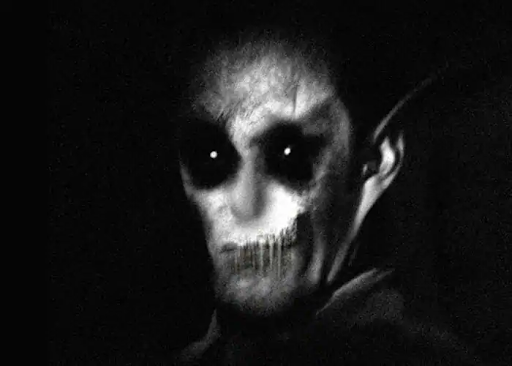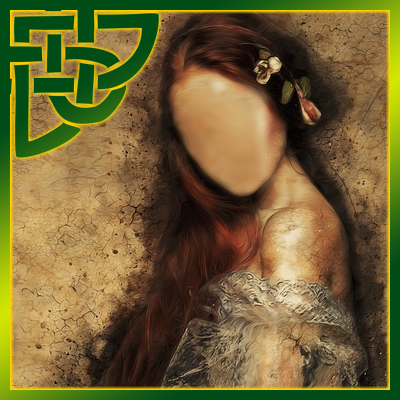
King Abhartach: The Irish Vampire
There once lived a jealous king named Abhartach. Abhartach was convinced that his wife had been cheating on him, so one night, he climbed out the bedroom window and onto the ledge, hoping to catch her in the act. However, he lost his footing and plummeted to the ground. He was buried standing upright, as done for all chieftains. However, by twilight the following day, his grave was discovered to be empty. Abhartach had risen once again. He went to the villagers and demanded they each give him a bowl of their blood to drink, and that they feed him like this every day. Terrified of him and this evil corruption of the dead, they complied.
Soon, they grew weary of this, so they turned to the chieftain of the Cathán Clan (Kay+Awn), now O’Kane. Over and over he would slay Abhartach and bury him again, but despite this, Abhartach kept rising. Each time, he grew more and more enraged and demanded more and more blood. So again, they called upon Chieftain Cathán. Having tried to slay the undead man several times, he called upon the aid of a Druid. This Druid advised him, saying that the only way to truly slay him would be to stab him with a sword made from the wood of a sacred yew tree, then bury him upside down and place a large stone over his grave and surround it with the branches of the sacred trees, such as oak, hawthorn, and rowan. This would prevent his rising.
After doing so, the branches magically took root and began to grow into a great thorn tree. The villagers he tormented built a dolmen over where Abhartach had been buried as a reminder to all, so that he may never be released. The dolmen no longer stands, save one stone, but the tree of thorns still stands as a guard.
Well before finding interest in eastern European vampires and stories of men like Vlad the Impaler, Bram Stoker, a Dublin native, would have certainly crossed paths with the story of Abhartach, as it was collected and cast to the masses in the late 19th century while Stoker was still there. It is believed that Abhartach was the initial inspiration for Dracula. Of course, the setting and characterizations that became his gothic novel were drawn from figures of Transylvanian origin, but there was a prior inspiration that is said to have spawned this interest in blood-suckers … King Abhartach.
An Dullahan: Behind the Headless Horseman

A figure thunders on horseback, disturbing the darkness. Flowing black robes, horse as black as night with eyes that burn like hellfire, head removed from the shoulders and carried in the hand, and death wherever he goes. A man from Galway one night went walking. On his way home, the quiet of the night was sharply broken by the sounds of hooves thundering closer and closer. Terrified, he turned around, only to be met with the sight of the Dullahan. The instinct of fear to flee overtook him, but death itself cannot be outrun, as they say. Realizing that he could not outrun the Dullahan, he resolved to instead outsmart him and so he reached into his pocket. Out he pulled a single gold coin and dropped it as he continued to run.
A loud roaring sound rang out, then …
Silence.
The man stopped running and turned around once more. He was alone.
Perhaps images of a more familiar rendition come to mind. Indeed, the legends of a Headless Horseman of Sleepy Hollow were inspired by the Dullahan. He himself is said to be the manifestation of the spirit of pure darkness and malice, Crom Cruach, or Crom Dubh (pronounced Krom Kroo+Ach or Krom Doov). Should you cross him, you best hope and pray he doesn’t call your name, for if he does, your soul will be ripped from your body, and death, the Dullahan, will take you from the mortal realms.
The Curse of Loftus Hall

Centuries ago, Loftus Hall, in County Waterford, stood as the home of the Loftus family. For a time, the Tottenham family held residency there. One particularly stormy night, there was a knocking at the door. THUMP, THUMP, THUMP! Mrs. Tottenham answered. There before her stood a man, wrapped in a cloak. He begged to come in from the storm and, feeling pity for the man, she gestured for him to enter. Thanking Mrs. Tottenham for her hospitality and kindness, he went to warm himself by the fire. She inquired where he had come from, as he didn’t sound like he was from these parts, and he replied that he was a merchant, but his ship had wrecked in the storm, leaving him as the only survivor.
Well, Anne, the daughter of the Tottenham family, had overheard this and grew smitten with the traveler, intrigued by the stories he must have. He was meant to stay the night. But one night turned into one week, one week into one month, and all the while, he and Anne Tottenham had grown close, and an intense affair ensued. The family continued to host their guest, despite the suspicions spawning from the lack of evidence of any shipwreck having occurred anywhere near there. Still, they ignored this and simply carried on to enjoy the glad company of their guest.
One night, they sat down in the parlor for a game of cards. All was well and merry, as it had been. But dark clouds began to roll in again. Still, all was merry. The fire in the hearth flickered and danced and the game went on. But then, Anne accidentally dropped one of her cards on the floor. She bent over to pick it up but was left in horror when she saw that the legs of their guest, her lover, were not human at all. The man had goat hooves! She shot back up, her eyes meeting his. He sneered a wicked grin, then with laughter filled with all the greatest evils, he shot through the ceiling with the blazes of hellfire.
The guest was the Devil himself.
The family tried to forget but quickly found they couldn’t, for Anne had fallen pregnant. Panicked, Anne’s mother imprisoned her in the drawing room, where the child was born alone. Anne lost her mind in that room. Fearing that the child was the spawn of the Devil, Mr. and Mrs. Tottenham slayed the child and put its remains in the wall of the drawing room where Anne was imprisoned. Anne passed not long after, her madness consuming her.
It is said that Anne still wanders the halls, looking for her baby, joined by other specters forever trapped by the curse of Loftus Hall.
A haunting song calls out this night
As darkness fills the air
And the chiming grand clock in the ‘well
Sings that he shall cometh
Forth in this stately place
The Devil’s guest and spell.
One two three,
Knocks at the door
The cold hand of a traveler
Let not him in,
Or your threshold pass
For be it the witchin’ hour
Listen thus, the wind in morn’
This haunting song doth sing
For with him brings
In the Raven’s call
The curse of Loftus Hall.
Meave Rua, Ghost of Dunluce

Dunluce castle, in Co. Antrim hosts not only the skeleton of a once great fortress but the ghostly specters of two lovers. It was said Richard Óg de Burgh fell in love with the daughter of Lord MacQuillan, the lord who owned the castle. MacQuillan’s daughter, Meave Rua, though, did not reciprocate his affections and turned him down, for she had a love of her own, Reginald O’Cahan, who loved her in return.
Angered by Meave Rua’s defiance upon denying her father’s request to give her hand to Richard Óg, her father locked her up in the northeast tower turret of the castle. There, she sat in the dark and dampness of her cell, her heart pining for her love, Reginald, hoping for him to come and rescue her from the tower.
Then, a great storm came. With the storm, her lover came, unable to be seen in his small rowboat by the wind and rain. Reginald snuck up the path to the castle, slipping inside and making his way to her cell. He freed her, and the two retreated to the rowboat that had been hidden away in a cave that was concealed by the rocks that jutted out from the wild waves. Setting out toward Portrush, the boat was quickly overtaken by the violence of the stormy swells and was consumed. Reginald held onto her as the boat overturned, being shattered against the rocks, but his grip on her was no match for that of the sea.
And Meave was lost, her body never recovered.
It is said that, during storms, her ghost can still be heard, her cries and sorrowful wails echoing out with the howls of the wind.
The Woman without a Face

In the harbor of Cork stood Belvelly Castle, where a beautiful woman, Lady Margaret Hodnett, once lived. Her beauty was well known all across Ireland, and one day, word of her beauty reached one fellow, Clon Rockenby. Lady Margaret was very fond of her own reflection in the mirror but found no love at all for Clon.
No matter how Clon asked for her hand, she denied him. Humiliated, yet determined, Rockenby decided to take her as his wife against her will, and rallied his army together, intending to attack Belvelly, deceived by the outward assumption that the wealthy Hodnetts would be so pampered by luxuries that they would be unable to ward off his attack.
He was gravely mistaken.
He laid siege to their castle for a year before they finally gave in and opened the gates to him. Clon went directly to Margaret but was shocked and appalled upon finding her thin and shriveled because of starvation. Enraged by his lust for her being thwarted, he took her favorite mirror and smashed it. Hearing the commotion, Margaret’s brother rushed into her room with his sword drawn and ran Clon through, killing him on the spot.
Margaret was slowly driven insane following the events of the past year and continued to return to the mirror, desperately hoping that her great beauty had returned. Alas, it never did, and Margaret remained in self-imposed isolation within the castle for the rest of her life. Her specter can be seen on occasion, wandering the castle halls, and often being seen without a face at all. As if reaching out to touch a mirror, her ghost is said to run its hand on the wall, where a stone whose surface is mysteriously smooth can be found.







